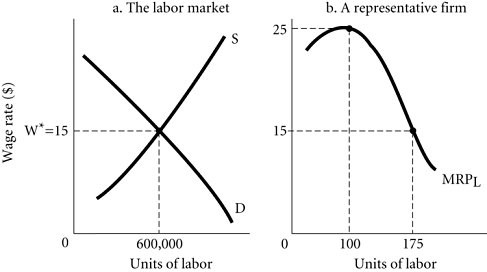Explain why to some game theorists, the idea of mixed strategies is appealing, and to others it is implausible
What will be an ideal response?
Sometimes the pure Nash equilibria call for identical firms to use different strategies. With mixed strategies where firms choose between possible actions with given probabilities, identical firms may use the same strategies, which is logically appealing. However, some theorists do not agree with the assignment of probabilities, and claim that mixed strategies are implausible because firms do not randomly select strategies. They suggest that a firm may use some information that its rival does not observe to choose a pure strategy.
You might also like to view...
Refer to Figure 4-11. Suppose the market is initially in equilibrium at price P1 and then the government imposes a tax on every unit sold. Which of the following statements best describes the impact of the tax?
A) The consumer will bear a greater share of the tax burden if the demand curve is D2. B) The consumer will bear a greater share of the tax burden if the demand curve is D1. C) The consumer will bear the entire burden of the tax if the demand curve is D1 and the producer will bear the entire burden of the tax if the demand curve is D2. D) The consumer's share of the tax burden is the same whether the demand curve is D1 or D2.
Assume we have a simplified banking system in balance-sheet equilibrium. Also assume that all banks are subject to a uniform 10 percent reserve requirement and checkable deposits are the only form of money. A commercial bank receiving a new checkable deposit of $100 would be able to extend new loans in the amount of:
A. $10. B. $90. C. $100. D. $1,000.
Refer to the information provided in Figure 10.4 below to answer the question(s) that follow.  Figure 10.4 Refer to Figure 10.4. At a market wage rate of $15, firms will hire ________ units of labor.
Figure 10.4 Refer to Figure 10.4. At a market wage rate of $15, firms will hire ________ units of labor.
A. 175 B. 100 C. between 0 and 99 D. 0
A decrease in interest rates will cause
A. AS to increase (move down and to the right). B. AD to increase (move to the right). C. AS to decrease (move up and to the left). D. AD to decrease (move to the left).